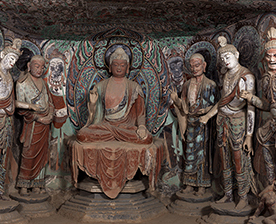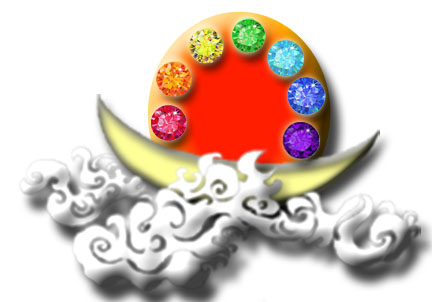
I believe the story we discussed at yesterday’s seminar on the SAUMOL is from the Skill-in-Means or Skillful Means Sutra (Upāyakauśalya-sūtra). In the story, it is recounted that in one of his previous lives, the Buddha, as a bodhisattva, was a captain of a ship. He discovered that a deranged man on board planned to kill the 499 other passengers. To prevent this mass killing and the immense negative karma it would generate for the would-be murderer, the bodhisattva decided to kill the man himself. This act was done out of great compassion to save the man from the severe karmic consequences of his intended actions.
This story illustrates the concept of skillful means (upāya) in Mahayana Buddhism, where actions are taken with the intention of benefiting others, even if they appear harsh or unconventional.
I am afraid I want to understand more. I found that there is a translation of this sutra available using both Tibetan and Chinese sources as well as some of what is believed to be the original Sanskrit. The comments below from the Amazon blub about the book made it even more interesting and appears to address some of the issues that were raised at our seminar discussion yesterday on the SAUMOL. I will report on what I find.
“This rare sutra, ancient but timely, has long been treated with circumspection because of its liberal attitude toward sexuality and other ethical concerns. One of the original statements of the early Mahayana School, it is here collated from Chinese and Tibetan translations, and from passages that remain in the original Sanskrit. Originally part of a larger sutra on the six perfections that included the well-known perfection of Wisdom sutra, the Skill in Means sutra explicates the other five perfections of the bodhisattva. The translator has traced its source to verses of the Ratnagunasamcaya-gatha that have no counterpart in the Perfection of Wisdom. The Skill in Means is also found as part of the Ratnakuta collection of sutras, under the title “The Question of Jnanottara`. In Part One, this Sutra establishes the liberal, even anti-monastic observance of Bodhisattva ethics, especially in matters of sexual involvement, introducing `skill in means` into the fabirc of Buddhist ethical life. Parts Two and Three constitute a reinterpretation of the life of the Buddha, demonstrating his motivation by `skill in means`; this is a primary source for the Buddhology of the Mahayana. The older and newer versions are translated side by side; extant Sanskrit passages are included. An introduction places the text in historical and literary prospective. There are copious notes, indexes and a bibliography.” SOURCE: Amazon website.
The Upaya Sutta, The Samyutta Nikaya
The following is the Theravada version of the Upaya Sutta as translated from the Pali by Thanissaro Bhikkhu FYI. Upaya is translated as “skillful” while kausalya as “cleverness.”
At Savatthi. There the Blessed One said, “One attached is unreleased; one unattached is released. Should consciousness, when standing, stand attached to (a physical) form, supported by form (as its object),[1] landing on form, watered with delight, it would exhibit growth, increase, & proliferation.
“Should consciousness, when standing, stand attached to feeling, supported by feeling (as its object), landing on feeling, watered with delight, it would exhibit growth, increase, & proliferation.
“Should consciousness, when standing, stand attached to perception, supported by perception (as its object), landing on perception, watered with delight, it would exhibit growth, increase, & proliferation.
“Should consciousness, when standing, stand attached to fabrications, supported by fabrications (as its object), landing on fabrications, watered with delight, it would exhibit growth, increase, & proliferation.
“Were someone to say, ‘I will describe a coming, a going, a passing away, an arising, a growth, an increase, or a proliferation of consciousness apart from form, from feeling, from perception, from fabrications,’ that would be impossible.
“If a monk abandons passion for the property of form…
“If a monk abandons passion for the property of feeling…
“If a monk abandons passion for the property of perception…
“If a monk abandons passion for the property of fabrications…
“If a monk abandons passion for the property of consciousness, then owing to the abandonment of passion, the support is cut off, and there is no landing of consciousness. Consciousness, thus not having landed, not increasing, not concocting, is released. Owing to its release, it is steady. Owing to its steadiness, it is contented. Owing to its contentment, it is not agitated. Not agitated, he (the monk) is totally unbound right within. He discerns that ‘Birth is ended, the holy life fulfilled, the task done. There is nothing further for this world.'”
NOTES
1.”Supported by form”: I.e., having form as its object. Similarly for feeling, perception, and fabrications.




Add comment